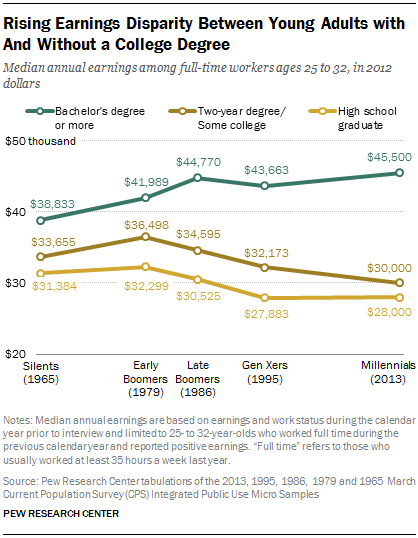Garden State teachers and students returned to school this month to find that both the state board of education and department of education have declared undying love and devotion to the Partnership for the Assessment of Readiness for College and Careers. The decisions, made when presumably fewer people were looking, first enshrined the controversial assessments as the sole standardized exam accepted to meet graduation requirements for New Jersey high school students beginning in 2021, and for extra measure the state tripled the weight that those exams will play in teacher evaluations beginning this year. It was a very busy summer for questionable examinations and discredited evaluations.
New Jersey has long required students to pass either a basic competency test or one of a range of tests used in the college application process in order to graduate, allowing students to assemble a portfolio of grades and other materials if an adequate test score is not recorded after attempting the exams. This layered approach to a testing requirement made sense when applied to the entirety of the state. After all, the requirement is to find a minimum level of competency required to graduate, so the logical option would be to give students different ways of demonstrating that competency and being certain that you are looking for what can be reasonably expected for students graduating from the state’s 586 school districts. Moreover, it is a nod to simple reality: high school students do not, as a whole, care a lot about proficiency exams administered as part of state accountability systems, although students with college ambitions have plenty of reasons to care about SAT, ACT, or advanced placement exams that carry actual personal consequences. Washington D.C.’s Wilson High School saw this very phenomenon this year where students openly admitted that they skipped or ignored the PARCC exams to focus on advanced placement tests scheduled for the following week.
New Jersey will have none of that now. By making PARCC the sole examination allowed for graduation, the state is telling all high school students they must take the state’s accountability exam seriously or face the possibility of not graduating. It is also aiming directly at New Jersey’s Opt Out movement which, while not the same force across the Hudson in New York, still boasted tens of 1000s of students refusing PARCC with 15% of 11th graders refusing the exams in 2015. That option will be vastly more problematic beginning in 2021, and parents who considered opting out in younger grades could easily be intimidated into not making that decision. New Jersey’s rationale for making PARCC the sole manner for meeting graduation requirements seems aimed primarily at forcing reluctant students and families to take PARCC seriously. As policy, this is a lot of stick with very little carrot.
It might also be illegal. Sarah Blaine, an education activist, blogger, and attorney, wrote cogently back in May that the new regulations seem to contradict the law they intend to implement. The state is required to administer a test for all students in 11th grade, and that test must “measure those minimum basic skills all students must possess to function politically, economically and socially in a democratic society: specifically, the test must measure the reading, writing, and computational skills students must demonstrate as minimum requirements for high school graduation.” Ms. Blaine notes that the 10th grade ELA test will not be given to all 11th graders statewide by definition. Further, she correctly notes that the content in the Algebra I test is taken by many New Jersey students as early as junior high school, leaving them in the ridiculous position of securing their “minimum” competency in math before they have even enrolled in high school.
Ms. Blaine was also correct when she noted that the state testing requirement only allows the state to deny a diploma to a student who does not meet the minimum basic skills — and the PARCC exam is, by design, not a measure of those skills at the 4 and 5 cut score levels. This cannot be emphasized enough: whatever else PARCC aims to measure, it is obvious from both available content and the results themselves that it is not an examination of grade level basic competence. New Jersey boasted some significant improvements from the 2015 PARCC administration in 2016 (some of which might be explained by increased participation); the percentage of students scoring 4 or 5 on the 10th grade ELA exam was 44.4% compared to 36.6% in 2015, and the percentage of students scoring that on the Algebra I exam was 41.2% compared to 35% in 2015. These gains are significant but would still leave more than half of New Jersey high school students ineligible to graduate. Commissioner Hespe claims “Those are areas we know we have work to do,” but given that PARCC in 2015 pretty closely matched New Jersey’s performance on the National Assessment of Educational Progress (NAEP)…

…and given that NAEP proficiency levels are not meant to measure minimum grade level expectations, the Commissioner can promise to work all he wants…he’s working with an examination whose proficiency levels are looking for and labeling advanced students. We can have a very fruitful and important conversation about the unequal distribution of students scoring at those levels and about the unequal distributions of educational opportunity in the state – but not while threatening to withhold high school diplomas simply because students are not getting straight As.
Increasing the percentage of teacher evaluations based on test scores from 10% to 30% was always a threat waiting in the wings, but it remains a giant blunder of an idea. New Jersey decreased its Student Growth Percentile (SGP) component in deference to the newness of PARCC in the Garden State, but increased familiarity with the exam does not mean that the bulk of the evidence is in favor of using growth measures to evaluate teachers. If you like the expression “arbitrary and capricious,” you will enjoy the next 3-5 years in New Jersey as the state tries to fend off lawsuits from teachers inappropriately labeled as ineffective due to SGPs and as it tries (and likely fails) to explain why SGPs that more effectively measure student characteristics than teacher effectiveness should be used in evaluating teachers. Fans of legal briefs should be popping the popcorn sometime next Spring.
Predicting the future is not exactly easy. New Jersey’s $108 million contract with Pearson to administer PARCC has two years left, by which time Governor Chris Christie will no longer be in Trenton. For that matter, PARCC’s long term health is legitimately in question. The consortium web site no longer boasts a map of states using the exam on its homepage because in 2011, they were able to boast of 25 participating states that “collectively educate more than 31 million public K-12 students in the United States, over 60% of all students enrolled in the nation’s public schools.” In the 2015-2016 school year, they had “eight fully participating states” and now offer a “tiered approach” for non-participating states to access PARCC content. I’m not taking bets on PARCC dying any time soon, but I wouldn’t suggest anyone place similar bets on it surviving either.
One prediction is pretty simple, however. In New Jersey, PARCC will become a de facto curriculum and disrupt even more children’s education. We have seen this over and over again in the No Child Left Behind era, and while the new federal education law grants states more flexibility on how they use accountability testing, New Jersey has chosen to double down on the test and punish policies of the past 15 years. School children in New Jersey, especially those in struggling districts, will get less science, less social studies, less art and music, and our youngest children will get a lot less play – and far more test preparation. The Class of 2021 will begin ninth grade algebra in a little less than a year, and a substantial percentage of those taking the course will find out that they do not qualify to graduate after only one year of high school and will scramble to repeat the exam (at whose expense?) or assemble other evidence of their “basic competence” for the Commissioner to review. The state DOE will take certain districts to the wood shed for plummeting graduation rates, and various parent coalitions will sue over the use of a test that violates the letter and spirit of the law as a graduation requirement. My bet for the next few years in New Jersey?

“Fasten your seat belts. It’s going to be a bumpy night.”












